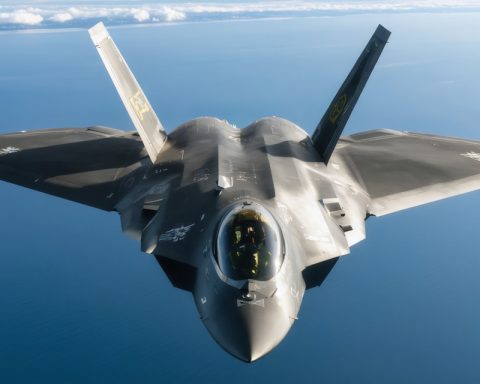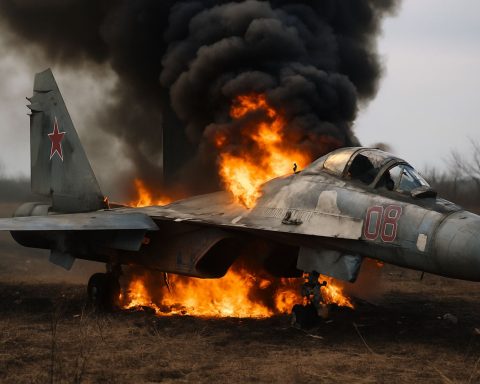- The Electron rocket launch from New Zealand marks a pivotal moment in wildfire management, utilizing advanced satellite technology.
- OroraTech’s satellites, part of their Constellation Phase 1, aim to target the “Afternoon Gap,” a critical period with limited wildfire monitoring.
- The satellite network provides real-time data to enhance wildfire risk assessment and response capabilities, aiding emergency teams.
- Rocket Lab’s successful launch signifies their growing role in private space ventures and collaboration with environmental initiatives.
- This mission exemplifies the synergy of technological innovation and environmental stewardship, reinforcing a proactive approach to global wildfire threats.
When the Electron rocket pierced the sky over New Zealand’s Mahia Peninsula, a transformation was set in motion, promising to reshape how we combat one of nature’s fiercest adversaries: wildfires. With remarkable precision, the 59-foot rocket separated from its core booster barely two and a half minutes into its journey, propelling itself into the vast canvas of space. The engine roared to life again, carefully orchestrating a cosmic ballet, nudging its payload of miniature yet mighty satellites into perfect orbits.
But this wasn’t just another launch. This mission heralded the dawn of an era where technology and tenacity converge to tackle the impending threat of global wildfires. The ambitious project marks the fifth mission for Rocket Lab this year and its 63rd overall, amassing a stalwart reputation in the competitive domain of private space ventures.
OroraTech’s constellation of satellites, their arrival eagerly anticipated on March 27th, is engineered with a singular purpose: to watch over our burning planet from 550 kilometers above. As they align and activate, these mechanical sentinels promise to deliver indispensable data to those on the ground.
The satellites, part of OroraTech’s Constellation Phase 1, aim to fill a critical observational gap. Known as the “Afternoon Gap,” this period is a pernicious window where fires erupt in fury, yet satellite coverage is typically sparse. The OroraTech network ensures that this void is bridged, delivering vital real-time information even as the afternoon sun bakes the earth below.
Wildfires, often starting in the shadows of the afternoon heat, become fierce ravenous hunters, threatening lives, property, and ecosystems. But now, equipped with the advanced sensors aboard OroraTech’s satellites, emergency teams will have access to unprecedented insights into fire behavior and its relentless spread. This non-stop stream of data extends far beyond daily weather whims, transcending limitations of cloud cover and sunlight.
With this innovation, OroraTech empowers those on the frontlines with cutting-edge tools to predict and combat fires before they rage out of control. Their mission accelerates into reality, not just through technology but through a profound commitment to protecting our shared natural world.
The synergy between Rocket Lab’s reliable launch capabilities and OroraTech’s pioneering satellite technology amplifies an ongoing global conversation: that of coupling innovation with environmental stewardship. In doing so, this collaboration reminds us that while fires burn fiercely, human ingenuity burns brighter still. This mission, therefore, is not just about launching satellites or collecting data. It is a clarion call to safeguard our planet, reinforcing a vision where technology serves as both shield and sword against the roaring threats of our time.
Revolutionary Satellite Launch: A New Frontline in Wildfire Combat
Introduction
The recent launch of Rocket Lab’s Electron rocket marks a significant development in the battle against wildfires. With OroraTech’s advanced constellation of satellites, this mission offers cutting-edge technology aimed at addressing one of nature’s most formidable threats. By focusing on the critical “Afternoon Gap,” these satellites are set to transform wildfire management with precise, real-time data. Here’s a deeper dive into the facts and potential impacts of this remarkable initiative.
How the Satellite System Works
At an altitude of 550 kilometers, OroraTech’s satellites are equipped with state-of-the-art thermal sensors capable of detecting heat anomalies that signal the start of a wildfire. The real-time data collected is sent directly to emergency management teams on the ground. This immediate insight allows for quicker response times, enhancing the ability to contain fires before they escalate.
How-To Steps for Using Satellite Data in Wildfire Management:
1. Data Collection: Satellites gather thermal and imagery data to identify potential wildfires.
2. Real-Time Transmission: Data is instantly relayed to ground stations and emergency services.
3. Analysis and Prediction: Advanced algorithms analyze the data to predict fire behavior and potential spread.
4. Response Coordination: Emergency teams receive actionable intelligence for targeted firefighting and evacuation strategies.
Real-World Use Cases
The application of satellite data in wildfire management isn’t entirely new, but the precision and timeliness offered by OroraTech’s constellation set a new standard:
– Australia and California: Regions notorious for severe wildfires can benefit substantially from this technology, enhancing their capability to predict and manage large-scale fire outbreaks.
– Developing Nations: Countries with less access to advanced fire-fighting resources can leverage this technology to improve their response strategies, preserving both human life and vital ecosystems.
Market Forecasts & Industry Trends
The space industry, particularly the segment focusing on Earth observation satellites, is expected to grow substantially in coming years. As environmental challenges increase, investments in technologies such as those developed by OroraTech may see a boost.
Industry Trends:
– Increased Private-Sector Participation: More private companies are entering the space technology arena, enhancing innovation and competitive pricing.
– Advanced AI Integration: Greater integration of artificial intelligence in analyzing satellite data for environmental and security applications.
Security & Sustainability
The satellites are designed with sustainability in mind, using materials and designs that reduce space debris. Security protocols ensure that data transmission remains secure and protected from cyber threats, safeguarding sensitive information crucial for emergency response.
Insights & Predictions
The successful deployment and operation of these satellites could set a precedent, encouraging more collaborations between space tech companies and environmental organizations.
Pros & Cons Overview
Pros:
– Real-time data enhances fire response efficiency.
– Complements existing satellite coverage by targeting the “Afternoon Gap.”
– Supports global wildfire management efforts.
Cons:
– Initial high investment cost.
– Reliance on continuous funding and support for operation and updates.
Controversies & Limitations
While promising, critiques may arise regarding data privacy, given the real-time tracking capabilities. Additionally, the dependency on satellite technology could be seen as a limitation if alternative firefighting strategies are underfunded as a result.
Quick Tips and Actionable Recommendations
For Governments and Agencies:
– Invest in training for data analysis to fully utilize satellite inputs.
– Integrate satellite data with existing emergency protocols for a holistic approach.
For Technology Enthusiasts and Investors:
– Monitor advancements in satellite and analytics technology as potential areas for investment.
– Support policy initiatives promoting sustainable satellite launches and operations.
Conclusion
The partnership between Rocket Lab and OroraTech exemplifies the fusion of cutting-edge technology with environmental stewardship, offering a shining beacon of hope in the proactive management of wildfires globally. As these satellites herald a new era in wildfire detection and management, they reinforce the impactful role human ingenuity plays in safeguarding our planet.
For more information on Rocket Lab’s future launches, visit Rocket Lab.









